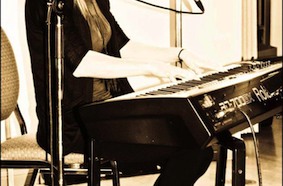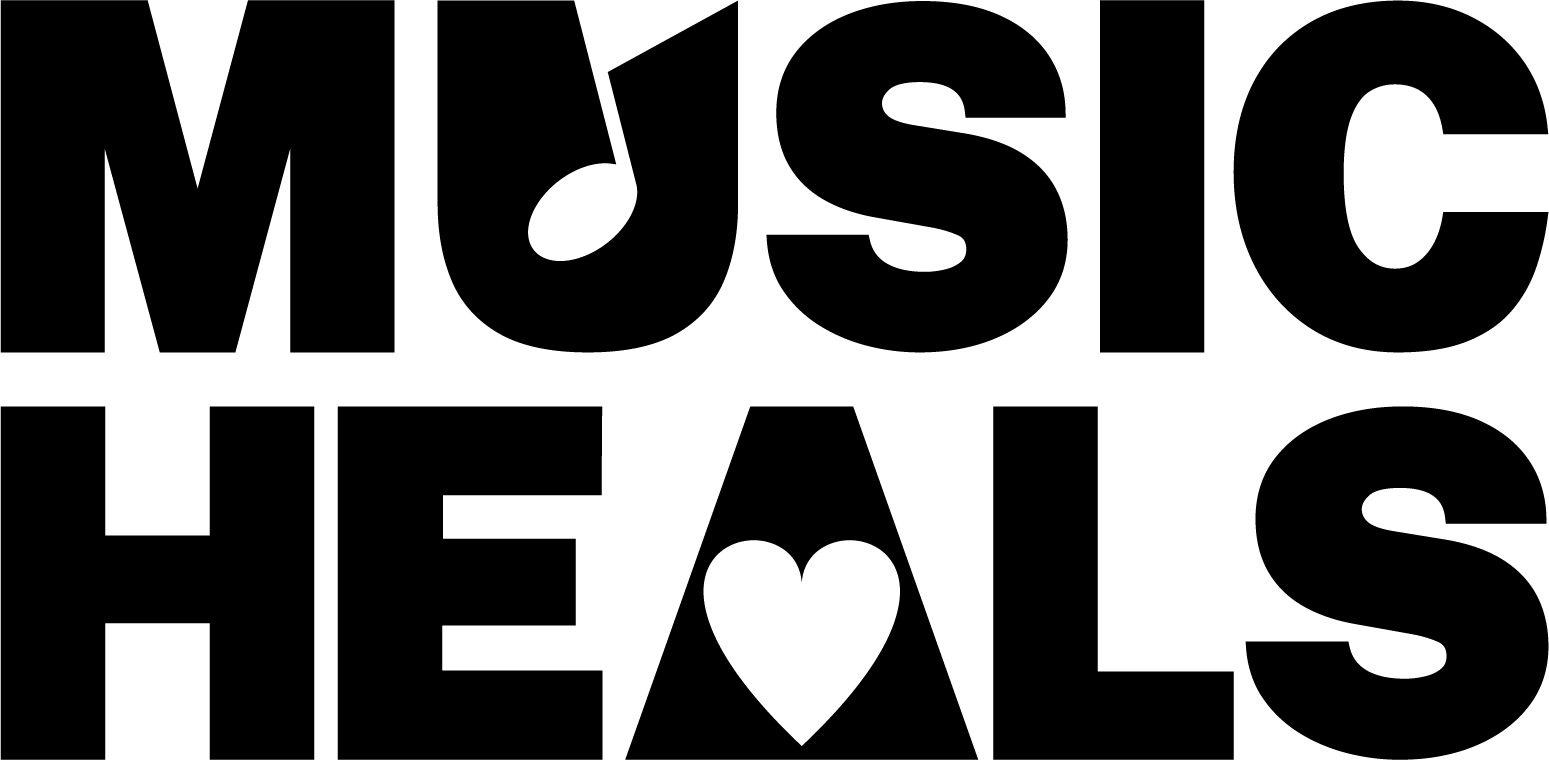Does Music Therapy Belong in Crisis Stabilization?
November 18, 2013

Monday, Nov 18, 2013
Written by Aimee Berends, MMT
Aimee is a recent graduate of Laurier’s Master’s of Music Therapy program. Based in Kitchener, Ontario, she is excited to continue working with children and adolescents in mental health at the local hospital in the new year. Along with her clinical work, Aimee works as a freelance musician and holds the principal oboe position with the Guelph Symphony Orchestra. We are so thankful for Aimee’s willingness to share her knowledge and experiences with us and we wish her the all the best in her very promising future!
———————————————————————————
Developing a new music therapy program in a hospital has been a fun learning curve. Since the fall of 2012, I have been the music therapist in the child and adolescent mental health unit of a regional hospital, first in a student placement and then as an intern. As there was no music therapist on staff, I developed the program with external supervision and support. Finding the right psychiatric language, the right people to help me, and the right music therapy aims have made it a challenging adventure. Understanding the psychiatric vernacular, and finding music therapy allies were challenges that I expected to face. However, I never would have imagined the impact that shifting my music therapy aims for clients would have on my overall experience as a new music therapist.
Introducing music therapy to a hospital can feel a bit like swimming against a strong current. It’s all about keep your head above water and pacing your work. Still, it can be very rewarding, and I’m excited about how many hospital music therapy programs are appearing today.
My work at this hospital took place in both inpatient and outpatient units of child and adolescent services. Both had unique atmospheres and both seemed like valuable “greenhouses” for patients to gain their footing during a rough patch of life. However, the transient nature of the inpatient crisis stabilization unit gave me much to reflect on. This ‘secure’ (i.e. behind two locked doors) unit is tasked with grounding the patient in the midst of a mental health crisis, often after attempted suicide. The patients rarely stay on the unit for longer than two weeks. How could music therapy be more than recreational in such a setting? With such little time for therapeutic alliance, how could I preserve the safety of the patients while also meeting therapeutic aims? Then there was the overwhelming amount of vulnerability that each patient was subjected to. How much should I focus music therapy aims on root issues in the patient’s life, when other members of the team were involved more directly with their cases?
I am a new music therapist, but it seems to me that the process of aim development is flexible. To me, it makes more sense to regularly revisit aims, since the patients’ needs and circumstances are always changing. This is why, over the course of 13 months at the hospital, the aims of the music therapy program changed slightly for the patients I encountered on the crisis stabilization unit.
I use a music-centered and psychotherapeutic approach, and I find both parts valuable in meeting adolescent clients in this crisis stabilization season of their lives. The music was always helpful. The music was where we connected, and where I learned about the patient. I would engage in what they liked to do or encourage them to try something new. The music was a safe place of emotional disclosure without words, where the patient could express without needing to qualify their expression. Many of these teens told me that music was everything to them. The psychotherapy and counseling helped to unpack the musical experience. I invited them to share their words of insight with me, as they wished. I usually also invited them to share their music or other art (e.g. sketching, fashion design, comics, photography, etc.) with me for discussion.
Some of the patients engaged energetically in both musical and verbal parts of the sessions, some one or the other, some not at all. Each person was unique, and this is why I valued having so many options to offer for self-expression. But I found it especially challenging to hone in on the ‘right fit’ of aims for individual sessions, since I was acutely aware of the increased vulnerability for patients. I began to wonder whether the crisis stabilization model was compatible with my music-centered psychotherapy approach.
Trying out therapeutic aims was a trial-and-error experience, and the process was far more involved than this short article can express. When something did eventually click, it changed my entire presence with patients.
I was sitting with a patient as usual in an individual session when it struck me. The whole point of crisis stabilization is to get the patient grounded enough to go back into real life or into a long-term mental health program. That’s a lot of intensive work in a short period of time. And while I was encouraging creative self-expression as a music therapy aim, I wondered if there was a way that I could be consistent with what the rest of the team was doing: setting goals and moving on. While this seemed tactless and insensitive at first, the more I thought about it, the more it felt right.
So I tried it. Instead of keeping things big and broad with aims like “to encourage the use of music as a positive coping mechanism”, instead I began to invite the patient to create a goal with me. Then together we would work backwards to process or forwards to plan, as it related to the goal. Patients would present goals like “to go to all the group sessions today”, “to learn how to manage my anger”, and “to prepare for my meeting with my parents”.
The following example illustrates this approach:
Lucy, age 17, is referred to me by her nurse because she has just received hard news from the psychiatrist about a deferred discharge date. Lucy comes into the room quietly and is invited to share with me how she is doing. She does not say much. She is then invited to play the piano with me in a clinical improvisation, without reference. She does so, playing each note with seeming intentionality and courage. She seems pensive. Afterwards, when I ask her about an especially rhythmic section in the music, she talks about her frustration today of watching the clock, never knowing how much time will pass until she will be able to go home. I ask Lucy if she has formed goals for her time on the unit. She responds that she thinks she has. Lucy says her goals are to learn how to manage her frustration and find better coping skills (note: the patients’ goals are often this vague). I ask if there is a way to put one of these goals into practice today. Together we brainstorm this, by planning how to achieve the goal of managing her frustration. We break it down into a short-term goal for the day of “journaling when feeling frustrated”. Lucy remembers she wrote a poem the day before about how she was feeling. I ask her if she’d like to share it with me. She does, and this catalyzes further discussion. We then use improvisation and artwork to close our goal-setting session.
While each session looked drastically different, I found the adjustment in the therapeutic aims to include ‘assisting in goal-setting’ be useful with most patients in the crisis stabilization unit. I sensed that the patient became focused on the here-and-now, with details about the past or future being important, but secondary. The patient was also able to talk about the goal without sharing their history if they were uncomfortable doing so. This mediated the amount of vulnerability and put disclosure in the client’s control. Even though the aim itself of “goal-setting” seemed dry, I enjoyed how creative these sessions could be,. The music in sessions could be immediately helpful. If I happened to have the opportunity to see the client two days in a row, each session can birth or support a new goal for the day.
I look forward to continue to be flexible in setting music therapy aims as patient needs and the unit’s circumstances change. However, the power of using music in such a medical milieu gives me shivers, for such life is invited into the sterile and calculated environment. And where time is of the essence, music therapy CAN be immediately useful.
“Music is the best means we have of digesting time” – W.H. Auden
Written by Aimee Berends, MMT
Note: This post is used with permission from the author.
Are you a music therapist, music therapy intern, or a professional in a field related to Music Therapy that has something to share on the Music Heals blog?
Submissions should include to links to your website and any social media channels you would like included in the article.
Submissions may be edited for length and photos for publication will require a waiver, which will be provided.Submissions should be sent to Alexina Davis: blog@musicheals.ca




